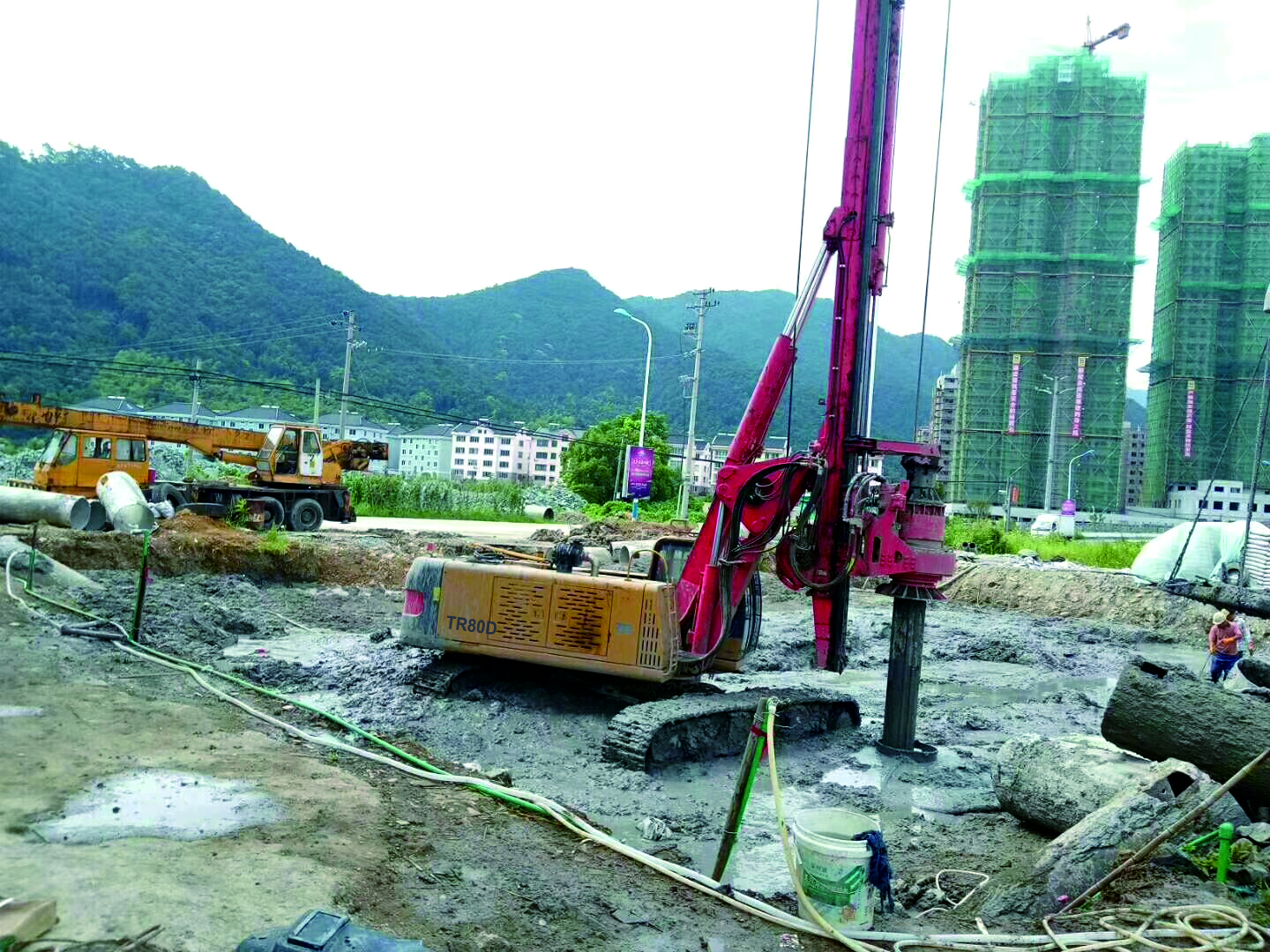 The characteristics of hard rock formations such as granite and the risk of hole formation. When designing pile foundations for many large bridges, the piles are required to penetrate into the weathered hard rock to a certain depth, and the diameter of the piles designed for these pile foundations is mostly above 1.5mm. Even up to 2m. Drilling into such large-diameter hard rock formations places high requirements on equipment power and pressure, generally require torque above 280kN.m equipment. When drilling in this type of formation, the loss of drill teeth is very large, and higher requirements are placed on the vibration resistance of the equipment.
The characteristics of hard rock formations such as granite and the risk of hole formation. When designing pile foundations for many large bridges, the piles are required to penetrate into the weathered hard rock to a certain depth, and the diameter of the piles designed for these pile foundations is mostly above 1.5mm. Even up to 2m. Drilling into such large-diameter hard rock formations places high requirements on equipment power and pressure, generally require torque above 280kN.m equipment. When drilling in this type of formation, the loss of drill teeth is very large, and higher requirements are placed on the vibration resistance of the equipment.
The construction method of rotary drilling is used in hard rock formations such as granite and sandstone. Measures should be taken from the following points to improve the hole forming efficiency and reduce risks.
(1) Equipment with a power of 280kN.m and above should be selected for drilling construction. Prepare drill teeth with higher hardness and better grinding performance in advance. Water should be added to anhydrous formations to reduce wear of drill teeth.
(2) Properly configure drilling tools. When drilling holes for large-diameter piles in this type of formation, the graded drilling method should be selected. In the first stage, an extended barrel drill with a diameter of 600mm~800mm should be selected to directly take out the core and create a free face; or a small diameter spiral drill should be selected to drill to create a free face.
(3) When inclined holes occur in hard rock strata, it is extremely difficult to sweep holes. Therefore, when encountering an inclined rock surface, it must be corrected before drilling can proceed normally.
Post time: Jan-05-2024

